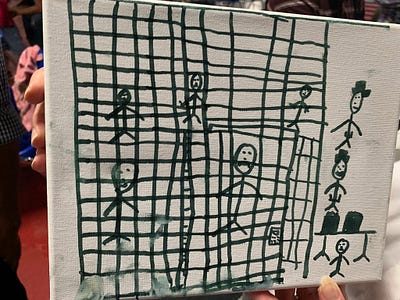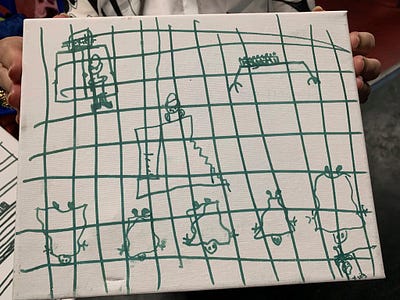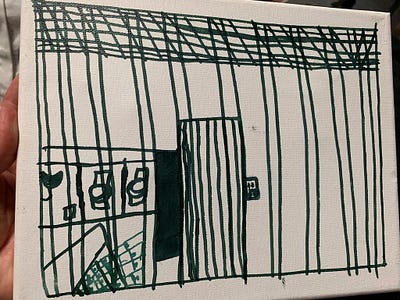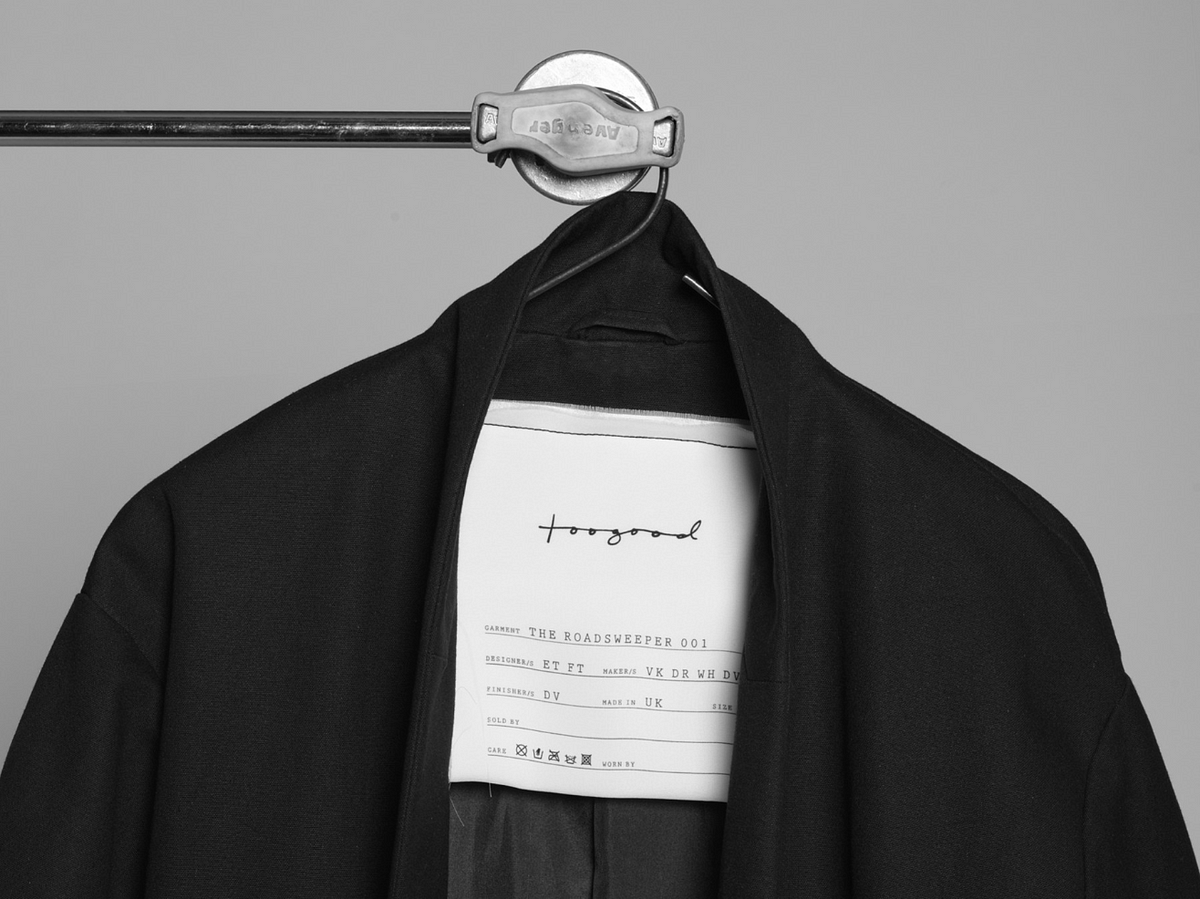The Smithsonian shows that our collective scrambling to define the canon is, in fact, a rebellious act. Alrosa begs the question of ownership. Outdoor Voices pulls a Mariah Carey.
I write a lot about defining strategy and how to build a brand. My goal is to always look for companies that are doing it right because those are the ones we best learn from (although it would be much easier to simply point out the ones that are doing it wrong).
Strategy, however, is only half the equation. The way companies bring those strategies to life can reveal a whole new world of learnings. Their tactics, decisions and moves are all signals to the consumer and to the marketplace.
They show us both what people want now, and how much they are willing to tolerate in being pushed into the future.
Here are some recent brand moves that have definitely edged the conversation forward.
The Smithsonian shows interest in obtaining the artwork of migrant children detained at the border.
You couldn’t hear this story without feeling something. After CNN shared images of drawings by migrant children who were recently released to a respite center in McAllen, Texas, the Smithsonian reached out to inquire about obtaining the disturbing works of art. Many of the works depicted heavy metal cages and towering authority figures in hats.



The Smithsonian describes itself as a museum, a research and education organization, and an “opener of doors”. But this move is about much more.
The brand signal here is clear. While other museums exist to celebrate America, the Smithsonian is here to hold it accountable.
- The Smithsonian has accepted the fact that every act is political (and there’s good reason for that, as Professor Scott Galloway has explained). By collecting these works, they act as the ultimate witness to America’s actions — a very provocative role to play as a brand.
- There’s perhaps no stronger way to flex your muscle as a brand than to choose which voices matter. It’s especially poignant as they’ve chosen to highlight the wordless voices of children. It opens up much more opportunity for discussion in a way that public outcry and political reporting can’t touch.
- Art has always been controlled by the gatekeepers of history, but it looks like that’s changing. Gatekeepers only have control if you give it to them, and in the art world, there is a stubborn old guard that refuses to open the door (and perhaps that is the “door” that the Smithsonian references in their description).
- This reminds me of other brands that are experimenting with the fabric of culture and history like Otis, an alternative investment platform that deals in items of cultural currency like Air Jordans and KAWS works. They’re democratizing both the investment itself and the act of choosing what is worth investing in.
- There are also the admirable efforts of companies like Fast Retailing (Uniqlo’s parent company) who may not be acting as a cultural gatekeeper, but say something about it when they make genuine efforts to hire refugees.
Alrosa creates digital passports for diamonds that beg the question of ownership.
Alrosa has tested out an interesting new initiative for its gems: electronic passports that “will tell the buyer the gem’s age, the place and date of its extraction, as well as the time and place of its cutting and the craftsman’s name and background.”
If you haven’t heard, millennials are cooling on the complicated idea of diamonds. Alrosa is hoping transparency and proof of sustainability will change that. It’s a noble brand tactic but not a strategy. Causes are never strategies, but that’s beside the point.
What matters here is who is executing the initiative. Alrosa is the world’s second largest diamond miner. You may own one of their stones but you’d never know it.
They are a producer taking on the responsibility of a retailer in branding the product, proof that everyone in the supply chain is in the business of branding now.
- Calling it a passport is interesting. The word passport is on-the-grid, not off. It’s about permission to move freely. It’s about having a state given identity.
- If you grew up in California like me, you were exposed to nonstop Diamond Exchange television ads touting “GIA and EGA certified”. The GIA (Gemological Institute of America), a monolithic governing body that works to standardize the trade, recently added a 5th “C” to their list of Color, Cut, Clarity and Carats — Country of origin. Major move, if not more symbolic than anything else.
- This reminds me of brands like Toogood who use labeling as a way to create meaning and connection with their products. Their garments have large tags sewn into the lining with a record of its name, designer and country, among other details. Blank lines for “Sold By” and “Worn By” complete the story once they’re filled in.
- These moves by Alrosa and Toogood both convey a philosophy about what it means to “own” or use something. Do we really own a fine item, or are we just using it for a portion of its lifetime?

Outdoor Voices flexes their muscle by refusing to tell an athleisure story.
A few people this week emailed me a New York Times interview with Outdoor Voices founder Ty Haney. It was this quote that caught their eye:
“We’re not up against the Nikes, Under Armours and Lulus of the world. What we’re up against is people’s negative perceptions of themselves.”
But in product terms, Outdoor voices is up against other sportswear and athleisure brands, and that underscores the brilliance of this quote. Ty Haney is talking from a brand perspective, not product. She knows she’s selling a story first and foremost.
- If your brand isn’t informing actual business decisions — not just marketing or design — then you’re not really building a brand… and Ty Haney backs this up with a mention of the new Exercise Dress. If exercise + dress feels weird to you, that’s a good thing. Outdoor Voices’ brand has actually informed their product design. That tension you feel in the name is because they’re not creating athleisure, they’re creating a new definition of what it means to be active.
- Netflix’s former VP of Product Management recently said, “at world-class companies, you often see exceptional teamwork between marketing and product teams, where the marketing team defines the brand, and the product team helps bring it to life.” This is where brand-led companies are going in the future.
"At world-class companies, you often see exceptional teamwork between marketing and product teams, where the marketing team defines the brand, and the product team helps bring it to life." https://t.co/ctKC0dEWIP #brand #branding #strategy #pr #marketing
— Jasmine Bina (@Jasmine_Bina) July 16, 2019
- Speaking of Netflix, this reminds me of CEO Reed Hastings once saying that their biggest competitor was “sleep”. That’s a baller claim. When other companies don’t even register on your radar, you’re sending a bold message to the market.
- Branding genius Mariah Carey owns this move. When asked about other mega pop stars like Jennifer Lopez or Demi Lovato, her simple response is “I don’t know her.” It’s the shade that’s launched a thousand memes.

What else?
Have you seen any smart moves in a vertical? Is someone forcing a new conversation?
Let me know in the comments or email me at jasmine@theconceptbureau.com.




